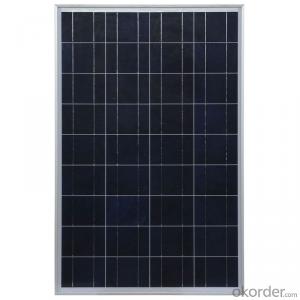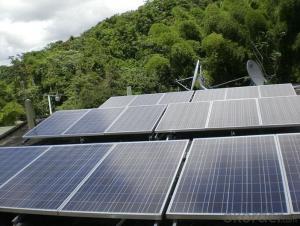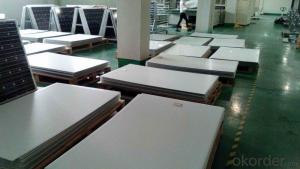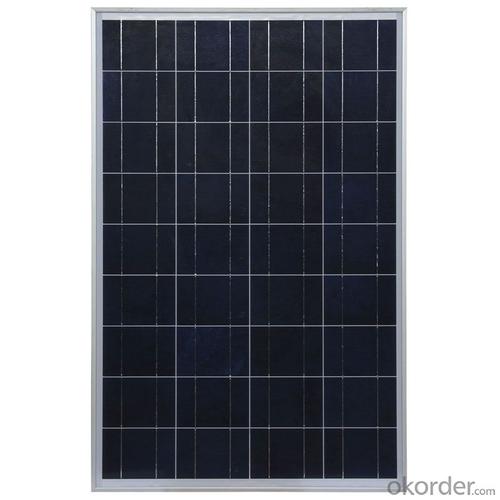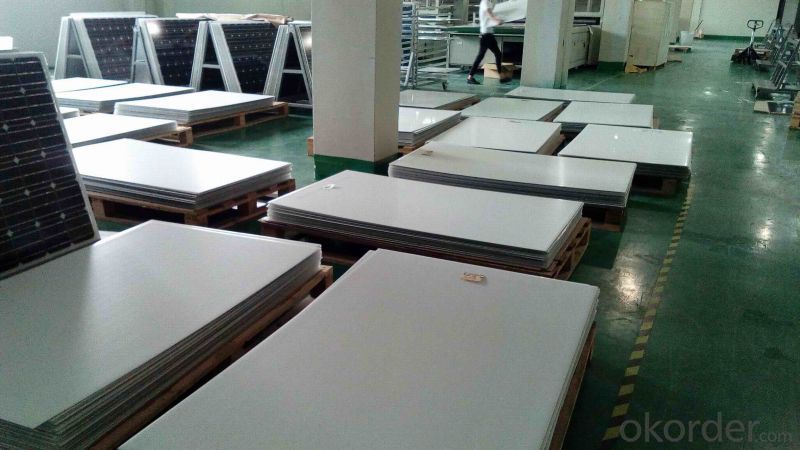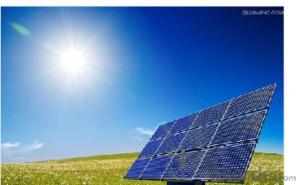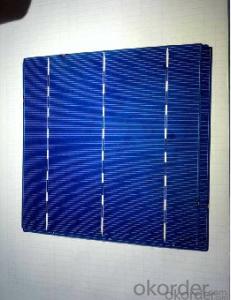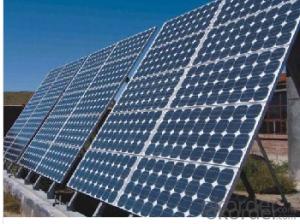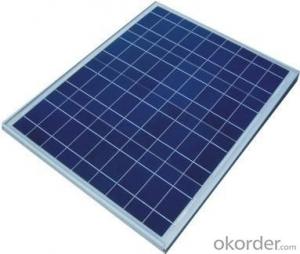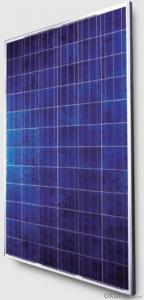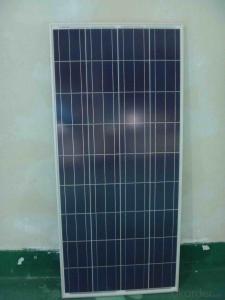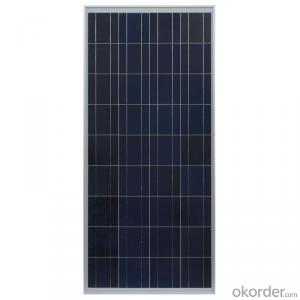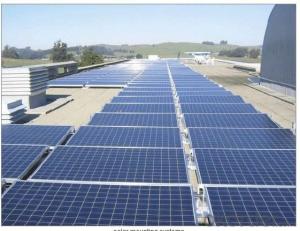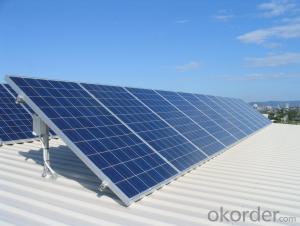250w Polycrystalline Alabama Solar Panels for Sale
- Loading Port:
- Shanghai
- Payment Terms:
- TT OR LC
- Min Order Qty:
- 10000 watt
- Supply Capability:
- 1000000 watt/month
OKorder Service Pledge
OKorder Financial Service
You Might Also Like
Specification
Produt name: 250W Poly Crystalline Solar Panel
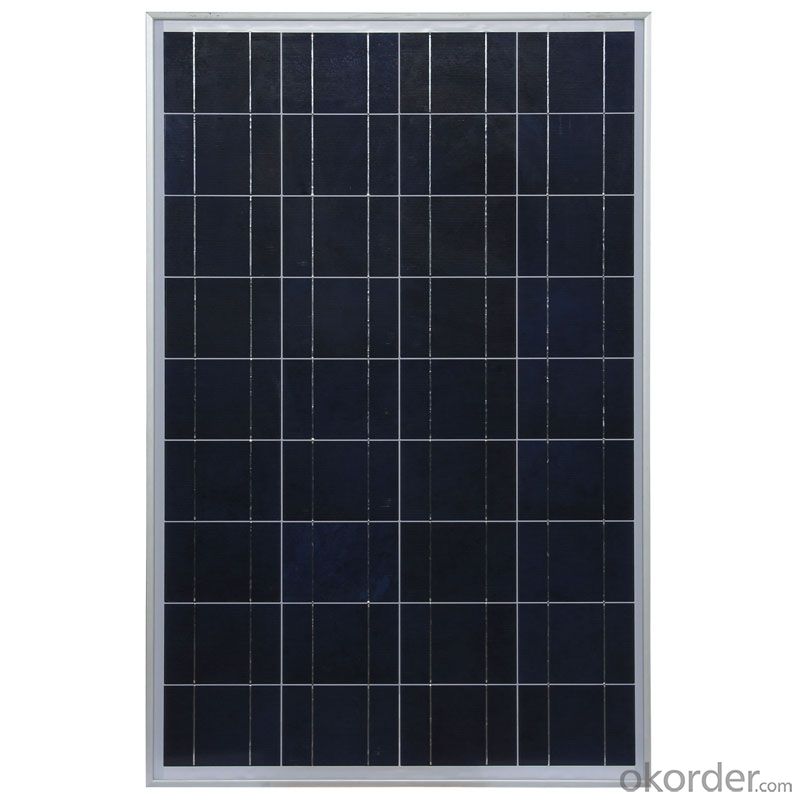 Product Highlights:
Product Highlights:
1. Guarantee positive power tolerance (0~+3%)
2. Module can bear snow loads up to 5400Pa and wind loads up to 2400pa
3. High performance under low light conditions (cloudy days, mornings and evenings)
4. Certified by Europe standards of TUV, IEC, CE and British MCS and AUS CEC
5. OEM/ODM available
Specs
| Electrical Characteristics | |
| Maximum Power [Pmax] | 250W |
| Power Tolerance | +/-3% |
| Maximum Power Voltage [Vmp] | 30.1V |
| Maximum Power Current [Imp] | 8.31A |
| Short-Circuit Current [Isc] | 8.73A |
| Open-Circuit Voltage [Voc] | 37.3V |
| Module Efficiency | 15.37% |
| Max. System Voltage | 1000VDC |
| Cell Size and Series | Poly 156*156 60pcs (6*10) |
| Temperature Coefficient of Pmax | - 0.47% / º C |
| Temperature Coefficient of Voc | - 0.35% / º C |
| Temperature Coefficient of Isc | 0.05% / º C |
| Mechanical Characteristics | |
| Dimension (mm) | 1640*992*40 |
| Frame | Anodized Aluminium Alloy |
| Glass | 3.2mm,High Transmission,Tempered Glass |
| Junction box & Cable | IP65 Rated weatherproof connectors Cable: TUV 1x4.0mm2 / UL12AWG,Length:900mm |
| Weight | 19.0Kgs |
Industry-leading Warranty:
Warranty on material and workmanship: 10 years
Guaranteed output of 90% after 12 years and 80% after 25 years.
FAQ:
1.Price per watt?
It depends on the quantity, delivery date and payment terms.
2.Parameter of the module?
We have different series of panels in different output, both c-si and a-si. please take the specification sheet for your reference.
3.Can you provide the peripheral products of the solar panels, such as the battery, controller etc.?
We have two companies(CNBM International & CNBM engineering Co.) with different approaches. We can supply not only the solar module but also Solar Cells, off grid solar system, even service with on grid plant.
4.Warranty policy?
Our product performance guarantees for 25 years
• 12 years guarantee for workmanship
• Timeliness of delivery
• Quality Products certified (TÜV, UL, CE, ISO)
5.Lead time?
In 3 days after purchasing, we will arrange the factory delivery ASAP. The specific time of receiving is related to the state and position of customers. Commonly 7 to 10 working days can be served.
- Q: How do solar panels affect the overall resilience of a building?
- Solar panels can significantly enhance the overall resilience of a building. By generating clean and renewable energy, they reduce dependence on traditional power grids, making the building less vulnerable to power outages or disruptions. Additionally, solar panels can provide a reliable source of electricity during emergencies, ensuring critical systems like lighting or communication remain operational. The energy independence offered by solar panels enhances the building's ability to withstand and recover from various crises, ultimately improving its overall resilience.
- Q: I am researching several solar panels to install in my house. I would like to use a 40 watt panel to connect, through a solar battery controller, to a battery or two. I would then like to use the solar panel (40 watts) to charge the battery(ies) for emergency use. Once charged, and when needed, I would like to use the battery(ies), 2 volt deep cycle, to power several LED lamps. Since I am new to solar power I had several questions...Is a 40 watt panel strong/large enough to charge a 2 volt deep cycle battery or two?How long would it take to charge one of these batteries?What would be the expected cost to purchase necessary supplies? (With the solar panel, battery controller, and MC4 cabling I've found I have an expected cost of roughly $00.00 with batteries)Would this be difficult for someone with little experience in this field?
- Whats the size of battery ? The time needed for your 40Watts panel to fully charge a battery depends on the size of battery. Usually battery size is mentioned in Amp-Hours (AH).
- Q: Can solar panels be installed on schools or educational campuses?
- Yes, solar panels can be installed on schools or educational campuses. In fact, many educational institutions are increasingly adopting solar energy as a sustainable and cost-effective solution to meet their power needs. Installing solar panels on schools not only reduces electricity costs but also serves as an educational tool, allowing students to learn about renewable energy and environmental sustainability firsthand.
- Q: Do solar panels require a backup generator?
- No, solar panels do not require a backup generator. They generate electricity from sunlight, so as long as there is sufficient sunlight, they can provide continuous power without the need for a backup generator.
- Q: Maximum size of solar panel i have to use is - 8 * 5 feet - this is the limitation given to us.
- go buy some 90's Arco solar panels. they're about 2x5 inches and produce 60 watts (24 volts x 2 amps) in full sunlight. then mount them up on a rig that tracks the path of the sun all day long. not all solar panels are created the same. the ones you get at harbor freight will be less efficient than the ones you buy from some guy whose father got the panel as a gift from a business party in the 990s.
- Q: Can solar panels be installed on agricultural or farming operations?
- Yes, solar panels can be installed on agricultural or farming operations. In fact, many farmers and agricultural businesses are increasingly adopting solar energy as a sustainable and cost-effective solution to power their operations. Solar panels can be mounted on rooftops, open land, or even on barns and sheds, providing clean and renewable energy to offset electricity costs and reduce carbon emissions. Additionally, solar panels can help farmers take advantage of unused or underutilized land, providing dual benefits of energy generation and agricultural productivity.
- Q: Do solar panels require a battery for energy storage?
- No, solar panels do not necessarily require a battery for energy storage. While batteries can be used to store excess energy generated by solar panels for later use, it is not a mandatory component. Solar panels can also directly feed the generated electricity into the grid or be used to power devices in real-time, without the need for a battery.
- Q: What is a good sight that I could go to about installing solar panels and all of the considerations of it?
- Just okorder
- Q: . Do they scratch easily? How do I remove snow from them without scratching them?2. What does the upkeep of many solar panels consist of? I want to have my electricity completely off of the grid.3. Are all solar panels made from the same material, regardless of size?
- anythign can be scratched/ruined/altered if not tended to properly.... remove the first biggest layer of snow and leave a lil under to try to see first if it melts away on its own (dpeendin what season of course) if not than get some luke warm water and soak the snow.... slosh it off with a rubber shovel or mop.broom whatever wont damage ur panels. anythign you take care of will last longer and take care of you.... and solar is expensive to put in and can be expensive to maintain . depends where you have most sun and depends how many resources you use, if you leave the tv on absent mindely all night and take 50 min showers or blast the heat with jsut on epathetic lil donwpour of rain instead of just BUNDLING UP like a alot of lazy *** ameicans and.or rich careless bastards of course youa re goign to be paying up and out of your asshhhhh-hooooo and nooooo there are some different materials solar panels are made of, there is a main base/core they use but im sure there are AT MOST two...the rest is either glass or plastic! depends for what you want and how many , includign size.... good luck!!!! excuse my typos
- Q: I don't see much solar panels on people's houses where I live. I got a long time to go before doing so but I was planning on buying a few solar panels when I retire in the far future. In your opinion, is such an investment worth it? Would you buy them? I realize they are very expensive hence why I said when I retire. Thanks for your opinion
- The payback is usually between about 5 and 5 years depending on how expensive electricity is in your area, the rebates available, and where you live (is it sunny most of the time?) Most people that get them don't do it for the investment - they do it to be energy responsible - but it's not a bad way to do both if you have the money to put into it. I personally just pay for the green energy option from my electricity provider. So I am buying power from solar and wind farms, and it cost about 0% more per month. I don't get the benefit of free power, but it comes with a smaller price tag initially, and I think when we all invest in these technologies, the price will improve over time, so energy costs will be lower in the future.
Send your message to us
250w Polycrystalline Alabama Solar Panels for Sale
- Loading Port:
- Shanghai
- Payment Terms:
- TT OR LC
- Min Order Qty:
- 10000 watt
- Supply Capability:
- 1000000 watt/month
OKorder Service Pledge
OKorder Financial Service
Similar products
Hot products
Hot Searches
Related keywords
